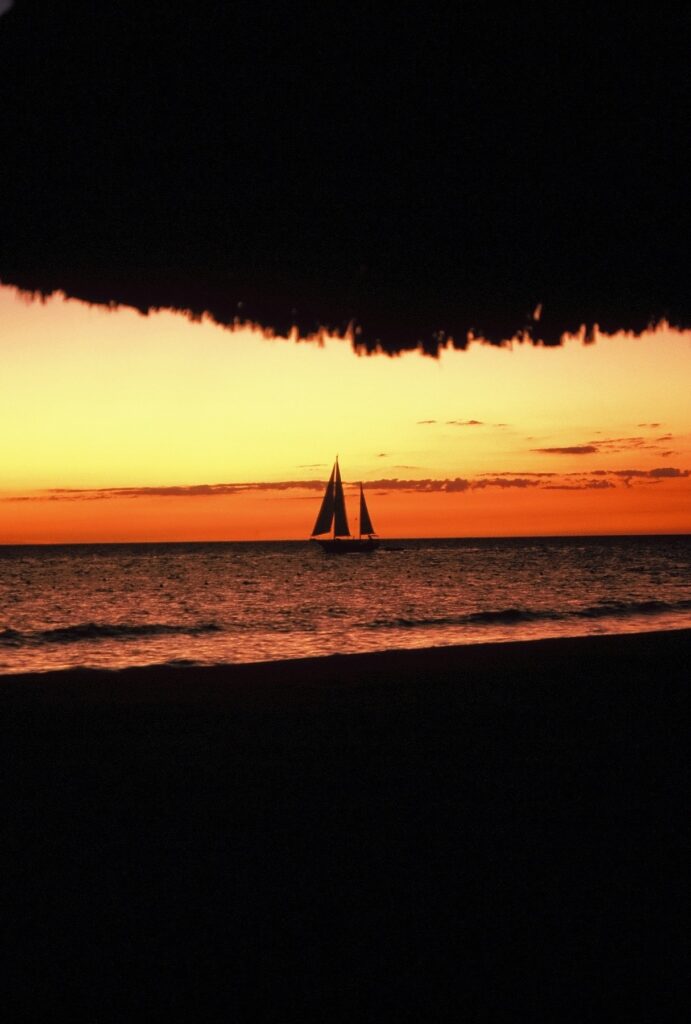There’s something universally awe-inspiring about a sunset. The vibrant hues, the play of light and shadow, the calming mood it casts—it’s no wonder sunsets are one of the most photographed scenes in the world. But capturing the magic of a sunset with your camera (and doing it justice) can be trickier than it looks.
Whether you’re just starting out or looking to take your sunset shots to the next level, today’s Focus Fridays is for you. And to help guide you, I’m sharing a few of my own sunset photos taken from a tropical shoreline—each one framed, composed, and captured with intention.
🌅 1. Timing is Everything
Sunset doesn’t happen in one instant—it unfolds over several moments, each offering different lighting and mood. Arrive early and stay late.
📸 Example: The image of the golden sun dipping just below the horizon, framed by coconut palms, was taken just before sunset reached its peak glow. The sky is still bright with light, casting a rich golden reflection across the ocean.

Pro Tip: Use a weather app or a photo planning app like Golden Hour to know when the sun will set in your location. Plan to arrive 30–45 minutes early.
📷 2. Don’t Just Focus on the Sun
The sun is the star, yes—but look around. Silhouettes, reflections, palm trees, sailboats, or even people can add depth and story.
📸 Example: In the photo of a sailboat framed beneath a beach umbrella, the vibrant orange sky becomes a canvas while the boat tells a peaceful story. In another image, beachgoers stroll along the shore, their shadows long and dramatic, framed by palm fronds.

Pro Tip: Use silhouettes to convey mood and simplicity. Expose for the sky to create crisp, dark outlines of foreground subjects.
🎨 3. Play with Color and Contrast
Sunsets are all about rich, saturated colors. Adjust your white balance to “Cloudy” or “Shade” to warm up the tones and avoid a flat, blue-tinted result.
📸 Example: The shot of the two sailboats drifting into the orange glow captures bold contrast against the sky. The framing beneath the roofline of a palapa adds texture and frames the shot with drama.

Pro Tip: Shoot in RAW if your camera allows it. You’ll be able to adjust color temperature and contrast more effectively in post-processing.
🎞️ 4. Use Foreground and Framing
Natural frames like tree branches, beach umbrellas, or even architectural elements can add dimension.
📸 Example: Several of the sunset images shared are framed with palm trees or beach shelters—turning an ordinary sunset into an artfully composed scene.
Pro Tip: Look for ways to frame the scene before clicking the shutter. A palm leaf or branch adds interest and draws the eye inward.
🛠️ 5. Equipment Tips
- Camera: Any camera will do—from a smartphone to a DSLR. Use what you have.
- Tripod: Useful for longer exposures as the light fades.
- Lens: Wide angles capture sweeping views; telephotos isolate the sun and silhouettes.
Pro Tip for Beginners: Turn on your camera’s grid to apply the Rule of Thirds—placing the horizon or sun along the lines makes a more balanced photo.
💡 Final Thoughts
Sunset photography is less about gear and more about vision and patience. Train your eye to see the changes in light, color, and mood. Watch how people move across the scene. Wait for that one perfect moment when all the elements align.
The next time you’re out with your camera and the sun starts to dip, take a deep breath, observe, and start experimenting. And don’t forget to enjoy the view, too—because sometimes the best sunset moment is the one you simply witness with your own eyes.
📣 Which sunset photo in this post is your favorite? Let me know in the comments! And if you’ve captured a sunset you’re proud of, tag me on Instagram @lensesandlatitudes so I can share the love.
Until next week—
Keep chasing the light,
Angela 🌞📷


